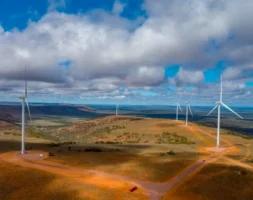British carbon emissions fell to just 97 grams per kilowatt-hour (kWh) on Sunday June 30, its lowest ever carbon intensity and meeting for the first time ever the UK Committee on Climate Change’s 2030 target of 100 g/kWh for a whole day.
This new record – which breaks the previous record of 104 g/kWh set during the country’s last Summer – plays into a larger trend which, according to British electrical power generation company Drax, which published the analysis of carbon emissions on Tuesday, is seeing British power stations produce 100 million tonnes less CO2 per year than they were at the start of the decade.
June 30 was a big day for the British electricity sector in more ways than one, as it was also the first day ever when more than half of the country’s electricity was supplied by renewable energy sources – with 39% coming from wind energy, 9% from solar, 8% from biomass, and 1% from hydroelectricity.
“Britain’s power system is decarbonising at a faster rate than any other country in the world,” said Imperial College London’s Dr Iain Staffell, who worked independently via Imperial Consultants to analyse Drax’s Electric Insights data. “We have spent more than half the summer without a single coal power station turned on, and renewables are breaking new records all the time.
“As a result our power stations are producing 100 million tonnes less CO2 per year than they were just six years ago. The amount of carbon saved is equivalent to taking every single car and van off the UK’s roads, or what would be produced if every single person in the UK flew to Beijing and back.
The records are, obviously, all intertwined, as it is the increase in renewable electricity generation which is helping to reduce emissions. Drax, the UK’s biggest renewable power generator, recorded a 52% reduction in its emissions over the first half of 2019 compared to the same period a year earlier, with 94% of the power produced at Drax Power Station in North Yorkshire being renewable.
“Drax is playing an important role in the energy transition – our carbon emissions in the first half of the year have halved compared to last year,” explained Will Gardiner, Drax Group CEO. “With our biomass, pumped storage, hydro and gas power stations, we are generating more renewable, low carbon and flexible power to support the system as it continues to decarbonise.
“Having converted another generating unit at Drax Power Station to use biomass instead of coal last year, we’re now producing more renewable power at the times it is needed most – but we we’d like to go further.
“If we can scale up our successful bioenergy with carbon capture and storage, Drax could become the world’s first negative emissions power station in the mid-2020s, helping to achieve the government’s net zero by 2050 carbon target.”
The record-breaking day came less than a month afteranother momentous record was broken by the country’s electricity system, as it went over 18 days without generating any electricity from coal. In total, Great Britain went without coal generation for 18 days, 6 hours, and 10 minutes, relying instead on gas (40%), nuclear (20%), wind (13%), and a variety of imports, biomass, solar, hydroelectricity, and energy storage, to meet its electricity needs.
“The UK started the industrial revolution with coal, and after 140 years, we’re showing that coal is obsolete,” said Dustin Benton of the UK’s Green Alliance in late-May.
“By 2025, the UK will see not just coal power plants shut permanently, but periods without any fossil fuelled electricity at all. This is not just a British story. The lesson for coal companies worldwide is that clean energy, efficiency and demand response are both cheaper and better. The lesson for governments is that it’s past time to plan a just transition for workers in the fossil fuel industry: clean energy jobs are the future.”
Worth noting, of course, is that Sunday June 30 was both windy and sunny, but also a day when demand is often lower with less people at work or school.
Also, a record day does not necessarily paint the whole picture, and June 30’s CO2 emissions from the electricity system were 72% lower than the most carbon intensive day of the year, which was January 24 with 347 g/kWh – a difference amounting to 158,000 tonnes of carbon dioxide.
“It’s fantastic progress, but we still have a long way to go to meet our net zero carbon targets,” concluded Staffell. “To make a real difference to the climate crisis, we must waste no time in using this low-carbon electricity to clean up our transport and buildings.”









